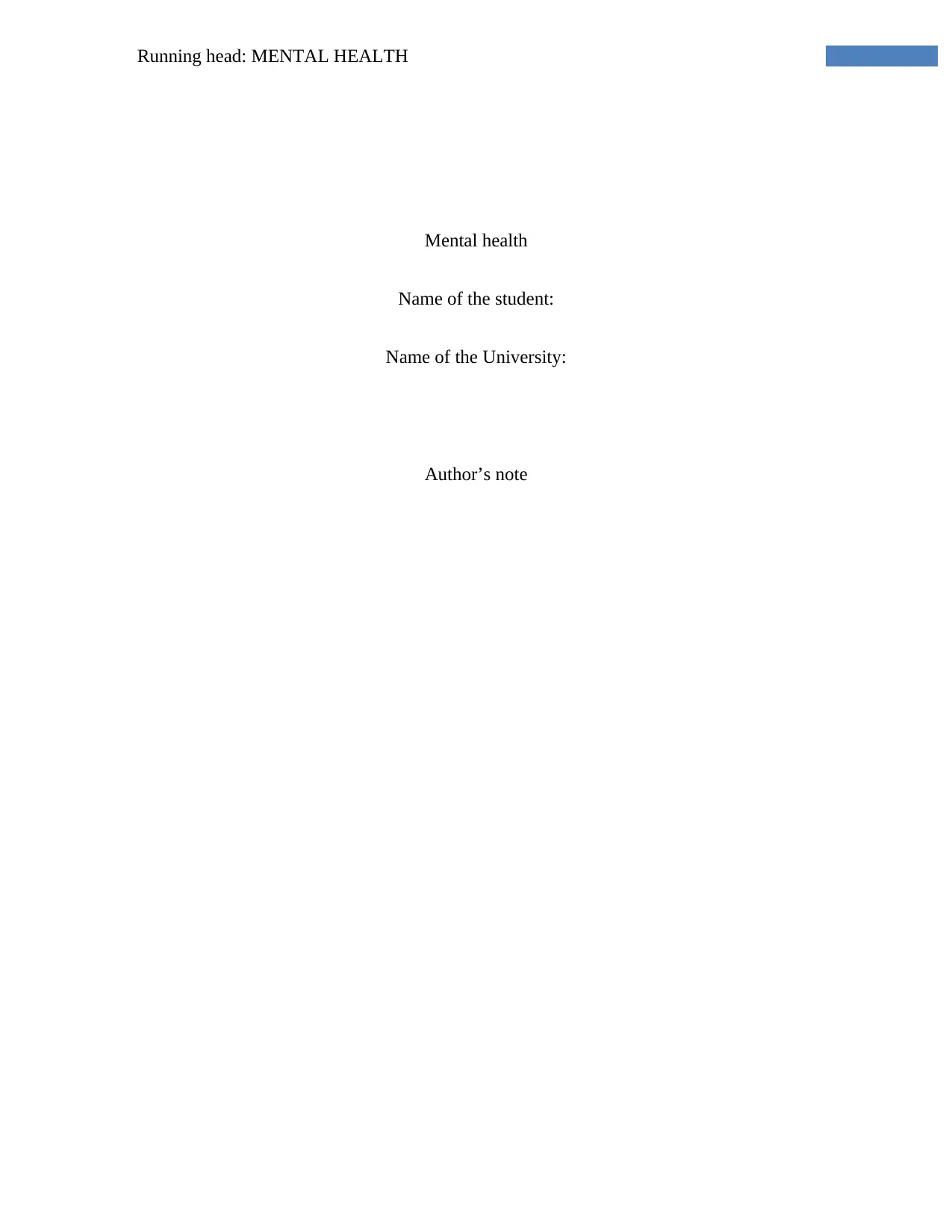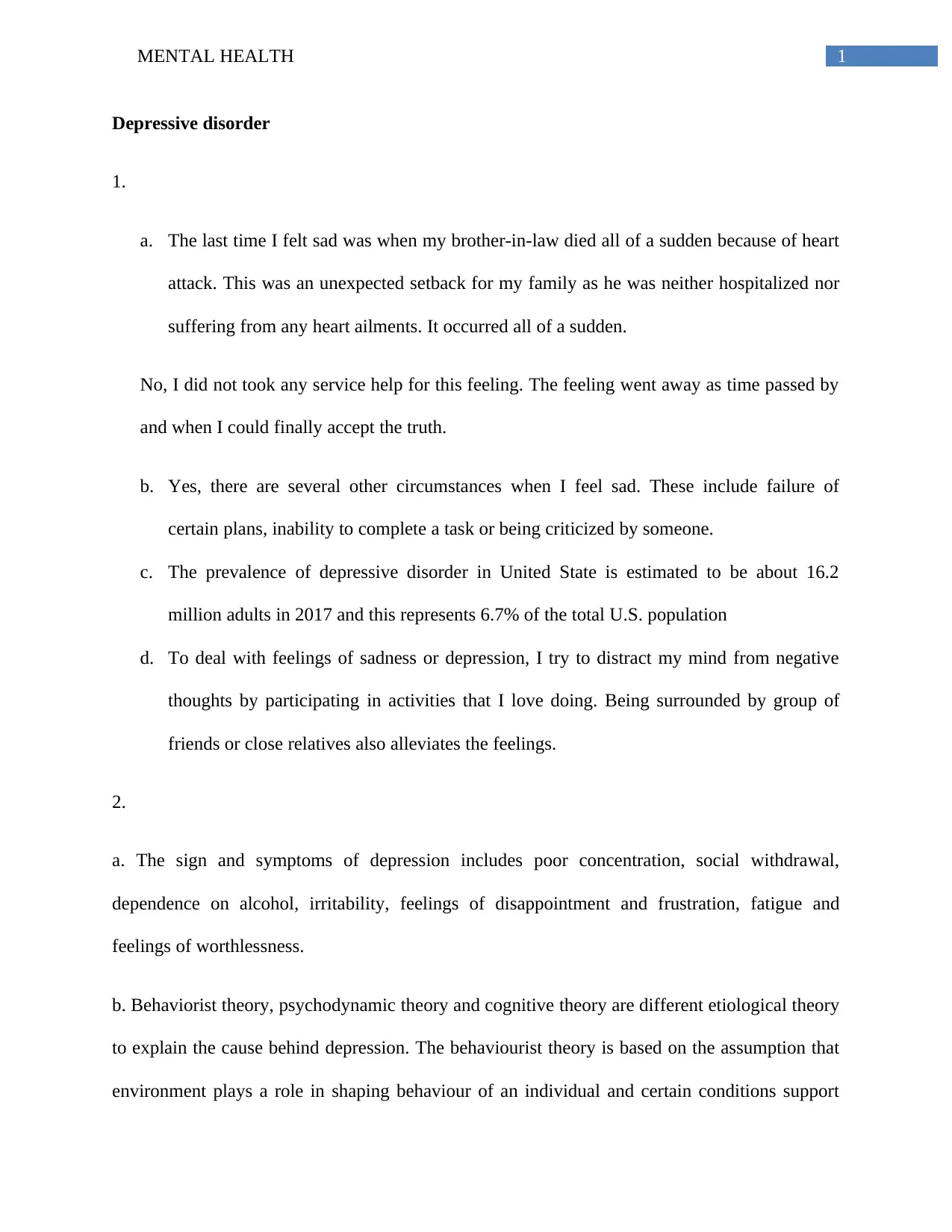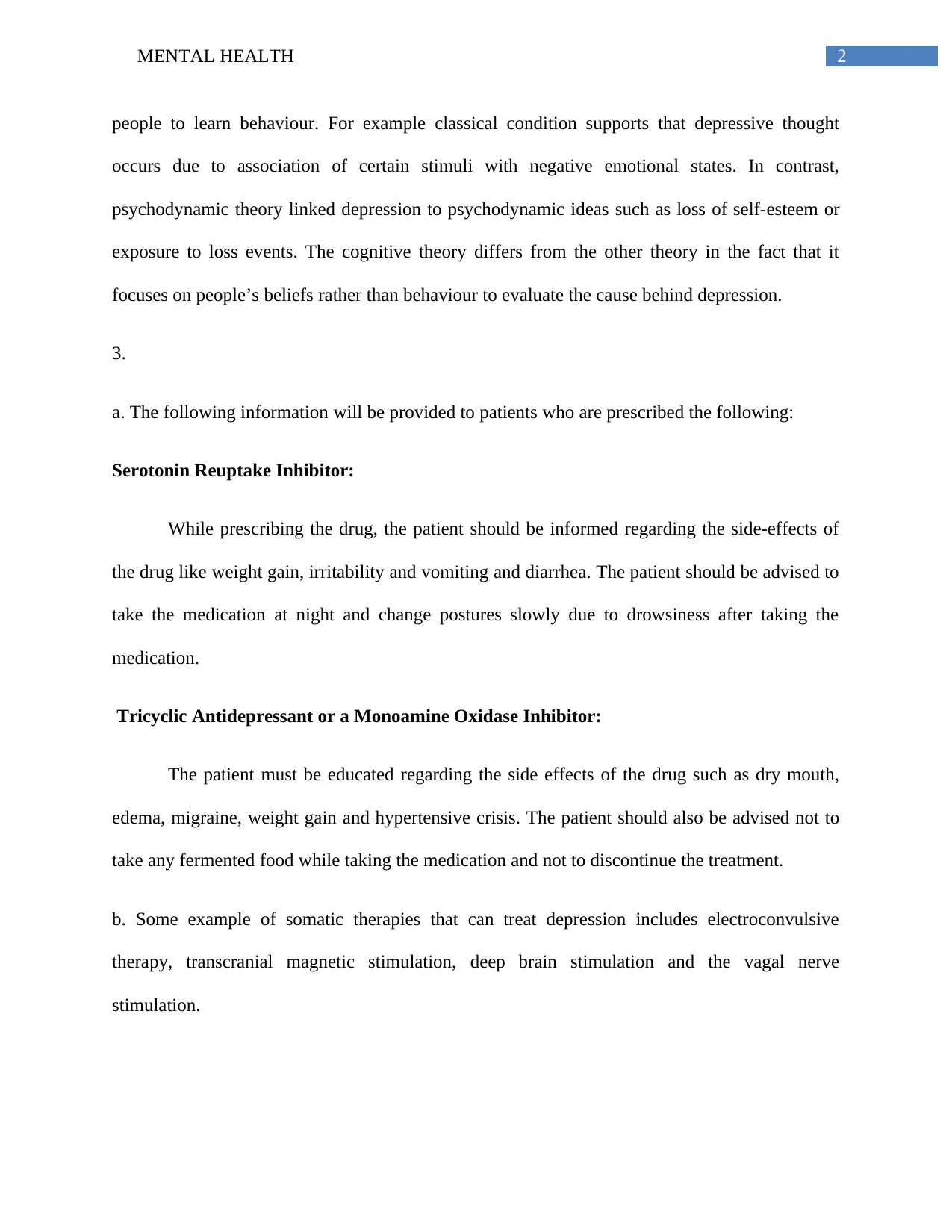Comprehensive Analysis of Depressive Disorders and Mental Health
VerifiedAdded on 2023/06/10
|3
|520
|485
Homework Assignment
AI Summary
This assignment provides a comprehensive overview of depressive disorders, addressing personal experiences with sadness, prevalence of depressive disorders, and coping mechanisms. It details the signs and symptoms of depression, compares etiological theories including behaviorist, psychodynamic, and cognitive perspectives, and outlines medication education for Selective Serotonin Reuptake Inhibitors, Tricyclic Antidepressants, and Monoamine Oxidase Inhibitors, including potential side effects and precautions. Additionally, the assignment discusses somatic therapies like electroconvulsive therapy, transcranial magnetic stimulation, deep brain stimulation, and vagal nerve stimulation as treatment options for depression.
1 out of 3










![[object Object]](/_next/static/media/star-bottom.7253800d.svg)